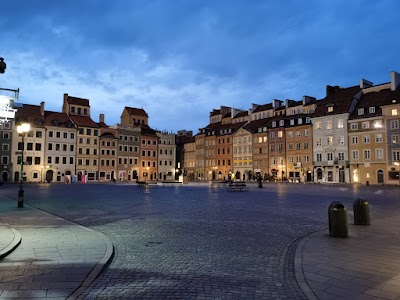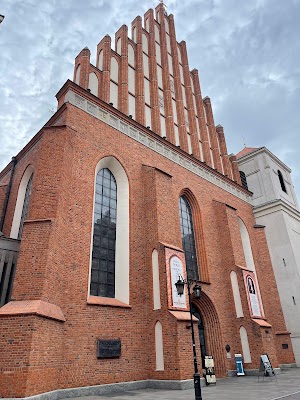Warsaw Barbican (Barbakan Warszawski)
Overview
The Warsaw Barbican, an exquisite example of medieval fortification architecture, is nestled in the heart of Warsaw, Poland. Constructed in 1540, this semi-circular bastion was designed by the renowned Italian Renaissance architect Giovanni Battista, known in Poland as Jan Baptist. The Barbican served as a crucial component of Warsaw’s defensive walls, aimed at protecting the city from potential invasions.
Built using a combination of bricks and stones, the Barbican features formidable thick walls, strategically placed arrow slits, and imposing battlements. Its distinctive red brickwork reflects the Gothic architectural style prevalent at the time. The structure originally included four defensive towers, providing soldiers with advantageous vantage points to guard against approaching threats.
The construction of the Barbican was no small undertaking. Skilled laborers, including masons, carpenters, and blacksmiths, dedicated themselves to this architectural marvel. Materials were sourced locally and from surrounding regions to ensure the building's durability against sieges and attacks. The dedication and craftsmanship of these workers are evident in the Barbican’s enduring presence.
While the Barbican played a pivotal role in Warsaw’s defenses, its military significance began to wane in the late 17th century. Advances in artillery and warfare rendered many traditional fortifications obsolete. Nevertheless, the Barbican remained a prominent landmark, symbolizing the city’s rich history and resilience.
In the 19th century, parts of the Warsaw Barbican fell into disrepair, with some towers dismantled and significant damage incurred. Restoration efforts gained traction in the 1930s but were abruptly halted by the outbreak of World War II, which resulted in further destruction.
Post-war, a substantial restoration effort was initiated to revive the Barbican to its former glory. Completed in the 1950s, this restoration was part of a larger project to reconstruct Warsaw’s historic Old Town, nearly obliterated during the war. Today, the Barbican stands as a testament to the city’s resilience and commitment to preserving its heritage.
Visitors to the Barbican can stroll along its ancient walls, envisioning the lives of the soldiers who once patrolled them. The surrounding area, known as the Old Town, offers a picturesque setting filled with cobblestone streets, charming squares, and vibrant buildings. The Barbican also hosts various cultural events and exhibitions, bringing history to life for both locals and tourists alike.
In contemporary times, the Warsaw Barbican has emerged as one of the city’s most cherished historical attractions. It embodies a harmonious blend of cultural heritage and architectural excellence, providing a fascinating glimpse into Warsaw’s storied past while serving as a scenic backdrop for the lively urban life that thrives around it. The ongoing care and effort invested in its construction, preservation, and restoration continue to be appreciated by all who visit.






